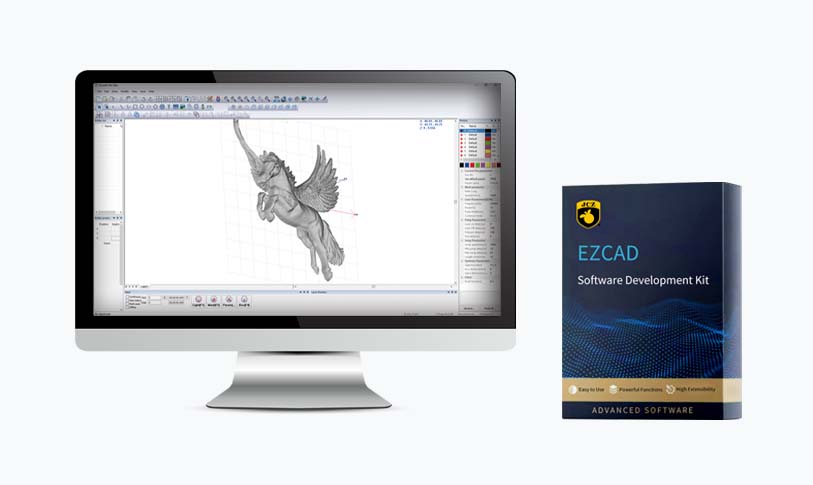[pulsed fiber laser]Harnessing the Power of Pulsed Fiber Laser Technology: Innovations, Applications, and Future Trends in Precision Manufacturing
News 2025-1-17
The evolution of laser technology has revolutionized numerous industries, with the pulsed fiber laser emerging as a particularly transformative tool in the realm of precision manufacturing. Unlike traditional laser systems, pulsed fiber lasers leverage the unique properties of optical fibers to deliver intense, high-quality beams that are compact, efficient, and versatile. This article will explore the various innovations fueled by pulsed fiber laser technology, its widespread applications, and the future trends that indicate its growing significance in various sectors.

Harnessing the Power of Pulsed Fiber Laser Technology: Innovations, Applications, and Future Trends in Precision Manufacturing
Pulsed fiber lasers operate by sending short bursts or pulses of light through a fiber optic medium, typically made of glass. This approach allows the laser to achieve a peak power that is significantly higher than continuous-wave lasers, making them ideal for applications that require high precision and acute control. One of the core advantages of pulsed fiber lasers is their ability to produce extremely short pulse durations, often measured in picoseconds or femtoseconds, which enables cutting, welding, and engraving with minimal heat transfer to the surrounding material. This leads to cleaner cuts and a reduced risk of thermal distortion.
**Innovations in Pulsed Fiber Laser Technology**

Harnessing the Power of Pulsed Fiber Laser Technology: Innovations, Applications, and Future Trends in Precision Manufacturing

Harnessing the Power of Pulsed Fiber Laser Technology: Innovations, Applications, and Future Trends in Precision Manufacturing
Moreover, the integration of digital control systems has paved the way for enhanced automation in manufacturing processes. This allows businesses to adopt Industry 4.0 principles, creating smart factories where pulsed fiber lasers can be controlled remotely and adjusted in real-time to optimize production efficiency.
**Applications Across Industries**
Pulsed fiber lasers have carved a niche in diverse industrial applications, showcasing their adaptability and effectiveness across various sectors. Some noteworthy applications include:
1. **Metal Cutting and Welding**: In industries such as automotive and aerospace, pulsed fiber lasers are used for cutting high-strength steels and alloys, ensuring precision and reliability in crucial components. They are also instrumental in metal welding, allowing for tighter joints and reduced heat-affected zones.
2. **Medical Device Manufacturing**: The healthcare sector benefits from the precision offered by pulsed fiber lasers in the production of medical devices, including surgical tools and implants. The capability to create intricate designs with minimal thermal impact is essential in this field.
3. **Electronics and Semiconductor Manufacturing**: Pulsed fiber lasers are utilized in the micro-machining of semiconductor materials, enabling the fabrication of fine features on circuit boards and microchips. As the demand for more compact electronics grows, so too does the reliance on this technology.
4. **Additive Manufacturing**: In the realm of 3D printing, pulsed fiber lasers play a crucial role in laser powder bed fusion (LPBF) processes, allowing for the additive fabrication of complex geometries with high precision.
**Future Trends in Pulsed Fiber Laser Technology**
The future of pulsed fiber laser technology looks promising, with several trends expected to shape its development. One major trend is the enhancement of multi-wavelength systems, which will allow the processing of a broader range of materials and enable greater flexibility in manufacturing.
Additionally, the growing focus on sustainability in manufacturing will drive innovations aimed at making pulsed fiber lasers even more energy-efficient. As industries strive to reduce waste and carbon footprints, the ability of pulsed fiber lasers to produce high-quality results with less energy input will be a critical advantage.
Another trend is the further integration of artificial intelligence and machine learning into laser systems. By analyzing real-time data from the manufacturing process, AI systems can optimize laser settings, predict maintenance needs, and enhance overall process efficiency, leading to reduced downtime and increased productivity.
**Conclusion**
In conclusion, pulsed fiber laser technology stands at the forefront of modern manufacturing innovations. Its unique capabilities have enabled it to emerge as a crucial tool across various industries, ranging from automotive to healthcare. As advancements continue to unfold, the potential applications will only increase, heralding a new era of precision engineering and efficient production processes. The power of pulsed fiber lasers has not just illuminated the path of current manufacturing practices but will also guide the future trajectory of technological advancements across the globe.